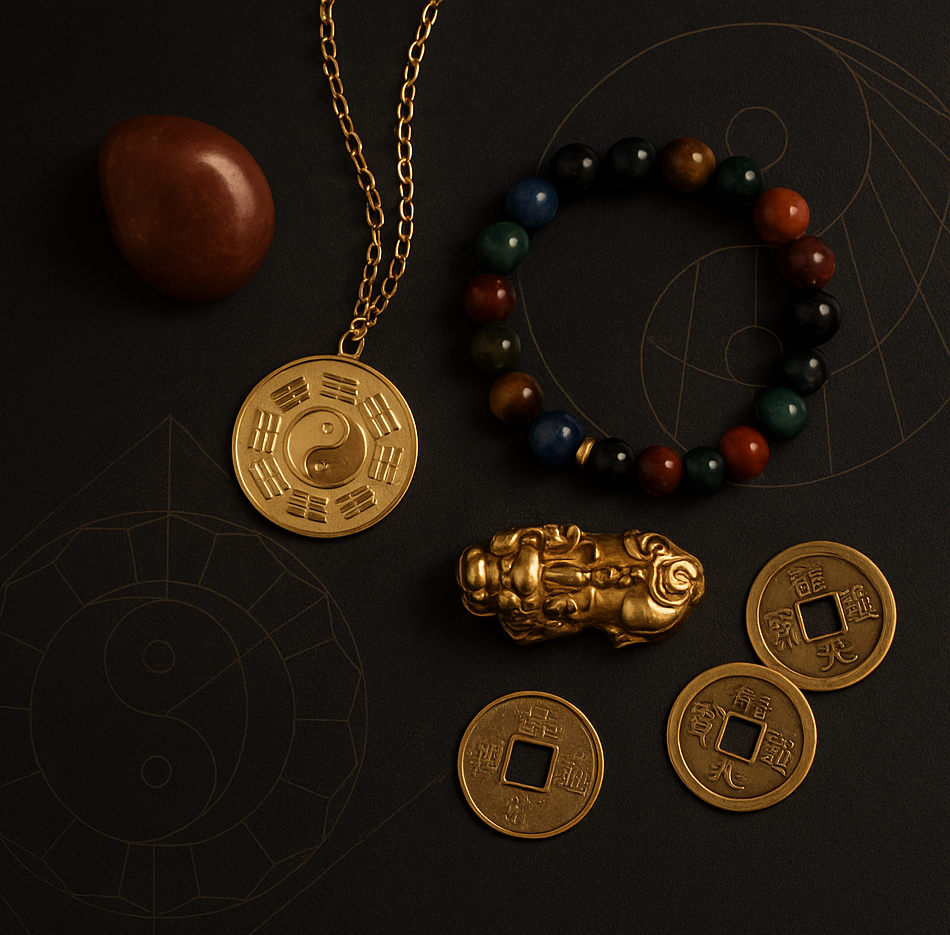
Feng Shui History: What and Where did Feng Shui Originate
As mentioned above, feng shui is an ancient Chinese tradition. It is a system of rules or laws that seek to bring balance to the flow of chi or the life force that is within everything.
By following these rules, you may avoid bad fortune and outcomes and instead invoke good luck for more prosperity and a better quality of life.
Mainstream articles may sometimes say that feng shui is a religion or a type of superstition. This is not true.
Unlike religion, which focuses on a specific belief system usually involving a god or deity, and superstition, which is made of beliefs involving magic and luck, feng shui uses the power of nature to achieve balance and harmony.
Let’s look further at why feng shui is distinctly different from religion and superstitions.
1. Feng Shui Uses the Powers of Nature
Unlike religion and superstition, feng shui uses the power of nature or the Earth.
It recognizes the magnetic forces of the eight cardinal directions and the distinct form of objects and places as a basis for its traditions thus already using what is available to be seen by the naked eye. It does not use anything supernatural or spiritual.
2. No belief or faith is required
Religion often revolves around believing in a specific God or creator and placing a high level of trust in them.
On the other hand, superstitions also involve a level of faith in practices or things that may bring about ill-fortune and bad happenings in your life. In contrast, feng shui does not require any of these.
Instead, feng shui beliefs ask you to make specific adjustments to improve your quality of life-based on a studied set of traditions.
You do not simply believe, but rather you must work to achieve and check whether the feng shui cure you have employed is what’s working best for you.
3. Worship and Rituals are Not Needed
Again, in contrast to religion, feng shui does not require any of these practices to be done to achieve a better quality of life. Nor does it use specific figures and symbols.
Instead, feng shui encourages a person to follow certain adjustments so that life can be easier and more prosperous for them.
You may follow them, or you may not; it is up to you to do what you want to gain good feng shui and reduce bad feng shui.
The History and Origin of Feng Shui
Now that you know about feng shui and what distinguishes it from religion and superstition, let’s dive deeper into feng shui history origin.
Feng shui means “the way of the wind and the water” and is a Chinese practice rooted in ancient times. It is the art and tradition of arranging buildings, spaces, and objects to achieve balance and harmony in the environment.
Feng shui is believed to have been used as early as the ninth century. Documented at around 960 BC, feng shui flourished under the Zhou leadership around 770-475 BC.
Philosophers during this period helped set up the teachings of feng shui, including Lao Tzu, Mo Ti, and Confucius. The teachings of Buddhism, Taoism, and Confucianism helped form the foundations of Feng Shui.
For thousands of years, the Chinese have believed in the presence of forces around the world. Later on, they discovered that these forces correspond to the magnetic forces of the Earth.
This led to the invention of the magnetic compass or the luopan (feng shui compass), which is still used today.
While the luopan was initially used for spiritual purposes, the compass was later used for navigation and travel. In modern times, it is now being used by feng shui practitioners to know the best location of objects and furniture in a space.
Together with the expansion of the Chinese empire, feng shui also prospered and grew around the region.
On a more household level, feng shui was used by ordinary people for the placement of their grave sites, ensuring that it follows the rules of feng shui for good chi.
A feng shui rule in this regard would be the placement of tombstones to be leaning against the mountain and facing the waters. An example of this would be Sun Yatsen Mausoleum located in Nanjing, which was built in traditional feng shui.
On a larger level, feng shui was used in architecture and building great structures. A good example of this would be the Great Wall of China, which was built following the rules of feng shui. The curved walls of the great structure allow the flow of chi to keep moving, inviting prosperity to the environment.
Yin and Yang
As discussed earlier, feng shui has roots in Taoism and believes in the chi or the life force that is in everything.
The chi is made up of both the yin and yang, which are opposing life forces that complement each other.
The yin is considered the feminine energy characterized by darkness, the moon, and the old which gives spirit to all things.
On the other hand, the yang is the masculine energy of light, the sun, and youth which gives form to all things.
Taoists believe that these two forces cannot be separated. Achieving a balance between the two improves the positive chi in life while repelling the negative chi. This leads to harmony in life.
Creating positive chi leads to better health, improved relationships with others, and increased prosperity and luck in career.
On the other hand, negative chi may lead to ill-fortunes, negativity, poor health, and a strained relationship with others. This is why it’s important to follow feng shui rules to remove negative energy.
Today, feng shui is used not only in China but around the world in the arrangements and placements of buildings, furniture, doors, and windows, which improve the flow of chi in the environment.
The history of feng shui in China is a rich tradition that continues to be useful even today.
The Five Elements of Feng Shui
Feng shui uses the elements of the Earth to invoke balance and maintain harmony leading to good chi.
A famous concept under feng shui would be the five elements that makeup everything around the world. Let us take a closer look at each one.
Earth
Associated with stability and security in relationships and businesses, the Earth element is associated with colors of creams and browns.
Incorporating these colors into your decor, as well as flat surfaces, square shapes, and images of landscapes will help invite strength into your home. The Earth element also works well with Wood for grounding.
Metal
Known to help with logic and mental clarity, the Metal element is associated with the colors white, beige, and silver.
Incorporating these colors with circular shapes will help balance overwhelming living spaces. Doing so helps a person increase their focus, organizational skills, and analytical abilities.
Metal furniture such as gold, silver, iron, and aluminum will also help balance the metal element in your home.
Water
The Water element in feng shui is expected to be represented by the color blue, which symbolizes trust and knowledge. Aside from this, black is also related to the element together with shapes that imitate the flow of water (those that are wavy and curvy).
Putting reflective surfaces such as mirrors, asymmetrical shapes, aquariums, or fountains within your home will help invite the water element’s qualities of intelligence, wisdom, and mystery while creating a calming atmosphere.
Wood
The Wood element is associated with spirituality and new growth. Putting colors of green and adding rectangular and columnar shapes will bring the wood element into your home and invite peace and vitality.
You may also directly add plants, flowers, and wood items such as wooden tables, frames, and the like.
Fire
The Fire element is known to inspire boldness and inspiration in the home. Red, one of the most auspicious colors in feng shui, is associated with this element as well as purple.
Red represents energy and strength, inviting warmth to the home while purple provides a calming effect. Incorporating these colors with triangles and stars will help you invite the fire element and help increase your leadership skills and enthusiasm.
You may also add candles, increase the flow of sunlight into your home, or add animal prints to increase the fire element’s energy.

